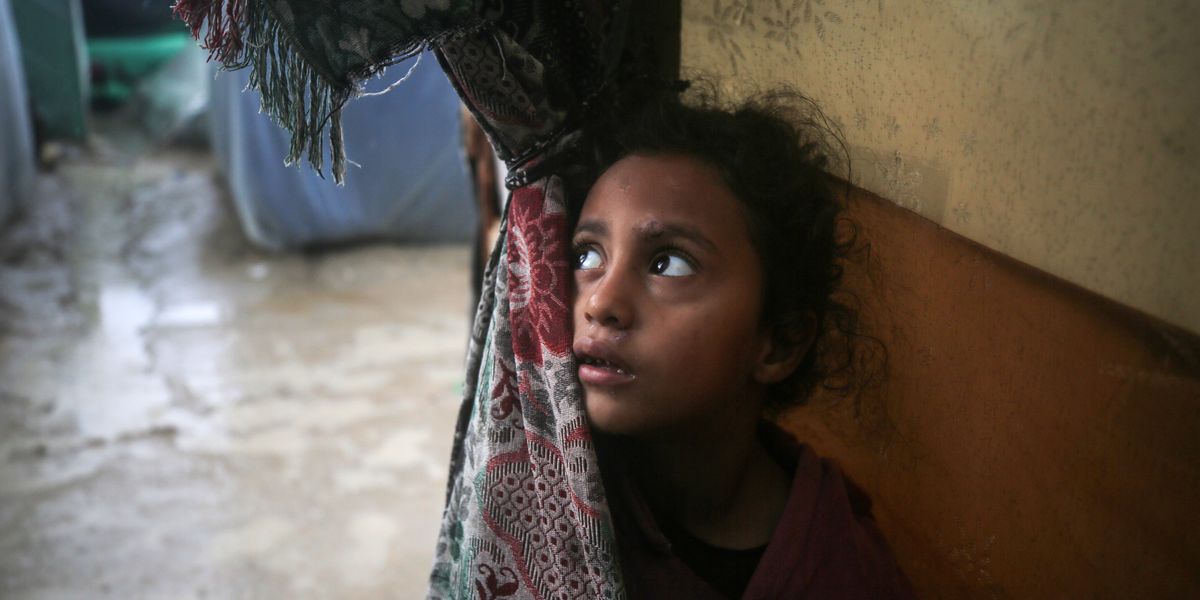Israel’s Water Blockade in Gaza Is ‘Matter of Life and Death’ for Children
UNICEF Warns 'Many More Children Will Die' in Gaza Without Safe Water Common Dreams


Worsening Water Shortage in Gaza Poses a Dramatic Threat to Children

Report by UNICEF highlights the worsening shortage of safe drinking water in Gaza, which is posing an increasingly “dramatic” threat to children. The U.S.-backed Israeli bombardment of Gaza has caused numerous crises for the enclave’s approximately 1 million children since October. Access to safe drinking water has become severely limited, with displaced people in the southern region of Gaza having access to only one and a half to two liters of water per day. This falls far short of the three liters required daily for survival and the 15 liters needed for cooking and sanitation needs.
Impact of Israeli Blockade on Water Access
The Israeli blockade on Gaza has significantly restricted access to water for children across the region. Before the latest escalation, Gaza was already referred to as an open-air prison by leading human rights groups. In response to an attack by Hamas on southern Israel, Israeli officials announced a blockade on food, water, and fuel deliveries. This has rendered water treatment plants inoperable and forced families in Gaza to rely on water that has not been desalinated. The number of aid trucks entering Gaza daily through Egypt’s Rafah crossing has also been significantly reduced, exacerbating the water crisis.
Destruction of Water, Sanitation, and Healthcare Facilities
Israel’s air and ground assaults have caused extensive damage to water, sanitation, and healthcare waste (WASH) facilities in Gaza. At least 50% of these facilities have been destroyed or damaged. The limited aid provided by the U.N. and humanitarian organizations is struggling to compensate for this destruction. UNICEF executive director Catherine Russell has called for a “lasting humanitarian cease-fire” in Gaza, emphasizing the urgent need for sufficient amounts of clean water to prevent further deaths from deprivation and disease.
Rise in Waterborne Illnesses
The limited access to clean water has led to a sharp rise in waterborne illnesses among children in Gaza. Cases of diarrhea, the second-leading cause of death among young children globally, have increased almost 20 times the monthly average since the bombardment began. Between November 29 and December 10, cases jumped by 66% to 59,895. The spread of these illnesses further strains Gaza’s collapsed healthcare system, which is also dealing with rising cases of chickenpox, meningitis, and respiratory infections.
Challenges at Refugee Camps and Shelters
The dire circumstances caused by the water shortage are particularly challenging at refugee camps and shelters across the Gaza Strip. Nearly the entire population of 2.3 million people in Gaza is now displaced. Long queues for limited toilet facilities and a lack of showers have led to poor hygiene conditions, especially impacting women and girls. UNICEF has materials and generators available at the border crossing in Rafah for repairing water and sanitation facilities, but access restrictions prevent their entry into Gaza.
In conclusion, the worsening water shortage in Gaza is posing a dramatic threat to children, with limited access to clean water leading to an increase in waterborne illnesses. The destruction of water and sanitation facilities, along with the challenges faced at refugee camps and shelters, further exacerbate the crisis. Urgent action is needed to address the water shortage and ensure the well-being of children in Gaza.
SDGs, Targets, and Indicators
| SDGs | Targets | Indicators |
|---|---|---|
| SDG 6: Clean Water and Sanitation | 6.1 By 2030, achieve universal and equitable access to safe and affordable drinking water for all | Access to safe drinking water for children in Gaza |
| 6.2 By 2030, achieve access to adequate and equitable sanitation and hygiene for all and end open defecation, paying special attention to the needs of women and girls and those in vulnerable situations | Limited access to sanitation facilities in refugee camps and shelters in Gaza | |
| SDG 3: Good Health and Well-being | 3.3 By 2030, end the epidemics of AIDS, tuberculosis, malaria, and neglected tropical diseases and combat hepatitis, water-borne diseases, and other communicable diseases | Rise in waterborne illnesses and cases of diarrhea among children in Gaza |
| 3.8 Achieve universal health coverage, including financial risk protection, access to quality essential health-care services, and access to safe, effective, quality, and affordable essential medicines and vaccines for all | Strained healthcare system in Gaza due to waterborne illnesses |
1. Which SDGs are addressed or connected to the issues highlighted in the article?
SDG 6: Clean Water and Sanitation
The article highlights the worsening shortage of safe drinking water in Gaza, which directly relates to SDG 6, which aims to ensure access to clean water and sanitation for all.
SDG 3: Good Health and Well-being
The article also discusses the rise in waterborne illnesses and cases of diarrhea among children in Gaza, which is connected to SDG 3, which aims to promote good health and well-being for all.
2. What specific targets under those SDGs can be identified based on the article’s content?
Target 6.1: By 2030, achieve universal and equitable access to safe and affordable drinking water for all
The article highlights the limited access to safe drinking water for children in Gaza, indicating that Target 6.1 is not being met.
Target 6.2: By 2030, achieve access to adequate and equitable sanitation and hygiene for all and end open defecation
The article mentions the limited access to sanitation facilities in refugee camps and shelters in Gaza, indicating that Target 6.2 is not being met.
Target 3.3: By 2030, end the epidemics of AIDS, tuberculosis, malaria, and neglected tropical diseases and combat hepatitis, water-borne diseases, and other communicable diseases
The article discusses the rise in waterborne illnesses and cases of diarrhea among children in Gaza, indicating that Target 3.3 is not being met.
Target 3.8: Achieve universal health coverage, including financial risk protection, access to quality essential health-care services, and access to safe, effective, quality, and affordable essential medicines and vaccines for all
The article mentions the strain on the healthcare system in Gaza due to waterborne illnesses, indicating that Target 3.8 is not being met.
3. Are there any indicators mentioned or implied in the article that can be used to measure progress towards the identified targets?
The article mentions several indicators that can be used to measure progress towards the identified targets:
- Access to safe drinking water for children in Gaza
- Limited access to sanitation facilities in refugee camps and shelters in Gaza
- Rise in waterborne illnesses and cases of diarrhea among children in Gaza
- Strained healthcare system in Gaza due to waterborne illnesses
4. SDGs, Targets, and Indicators
| SDGs | Targets | Indicators |
|---|---|---|
| SDG 6: Clean Water and Sanitation | 6.1 By 2030, achieve universal and equitable access to safe and affordable drinking water for all | Access to safe drinking water for children in Gaza |
| 6.2 By 2030, achieve access to adequate and equitable sanitation and hygiene for all and end open defecation, paying special attention to the needs of women and girls and those in vulnerable situations | Limited access to sanitation facilities in refugee camps and shelters in Gaza | |
| SDG 3: Good Health and Well-being | 3.3 By 2030, end the epidemics of AIDS, tuberculosis, malaria, and neglected tropical diseases and combat hepatitis, water-borne diseases, and other communicable diseases | Rise in waterborne illnesses and cases of diarrhea among children in Gaza |
| 3.8 Achieve universal health coverage, including financial risk protection, access to quality essential health-care services, and access to safe, effective, quality, and affordable essential medicines and vaccines for all | Strained healthcare system in Gaza due to waterborne illnesses |
Behold! This splendid article springs forth from the wellspring of knowledge, shaped by a wondrous proprietary AI technology that delved into a vast ocean of data, illuminating the path towards the Sustainable Development Goals. Remember that all rights are reserved by SDG Investors LLC, empowering us to champion progress together.
Source: commondreams.org

Join us, as fellow seekers of change, on a transformative journey at https://sdgtalks.ai/welcome, where you can become a member and actively contribute to shaping a brighter future.







